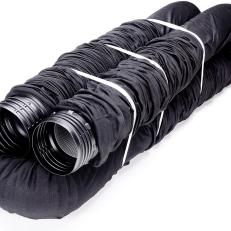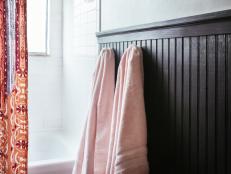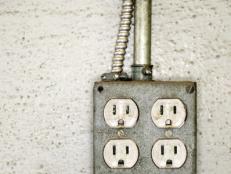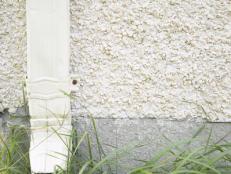How to Install French Drains
Divert groundwater from the basement or foundation with the help of gravel and fabric.

Good drainage is important to ensure that a home stays dry and free of mold. If groundwater collects in the basement, it is not only an inconvenient eyesore for the homeowner, it can also lead to wood rot and mold.
The most reliable way to eliminate undesirable, free-standing water is to install French drains with slotted pipes, filter fabric and gravel. The old way of installing French drains is to do it without the gravel and the fabric. Without the gravel and the fabric, however, the drain can clog up with sand and soil over time.

The best practice for installing French drains is to use perforated drainage pipes, which allow water to enter or exit through small openings along the pipe. The perforations can be circles or slots. But slotted pipes are better than pipes with small round holes because they tend to reduce the number of fine soil particles that get into the pipe.
Materials Needed
- shovel
- striping spray paint
- top soil
- sand
- 6' drain pipe (or more, if needed)
- roll of landscape fabric
- gravel
- turf
- landscaping stones
Buy French Drain Pipes
Determine Area for Re-Routing and Draining
Locate the appropriate area of yard for excess water to be re-routed. Choose a location where the flow of water won't affect neighboring properties. Determine a slightly downward-sloping route at least 1 meter from walls or fencing that's clear of any obstructions such as posts, trees or shrubs.
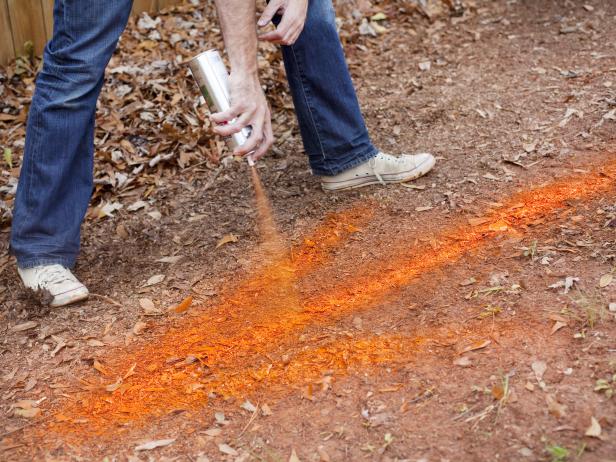
Tip: Drains that slope 6" for every 50 feet ensure the best result. Use striping spray paint to mark the drainage route.
Create a Trench and Add Gravel
Referring to spray paint marks, use shovel to dig a 6" wide trench with a depth no greater than that of the nearest foundation (Image 1). Tip: Proper trenches run parallel to buildings and horizontally across slopes. Once trench is dug, add a 3" layer of gravel along bottom (Image 2).

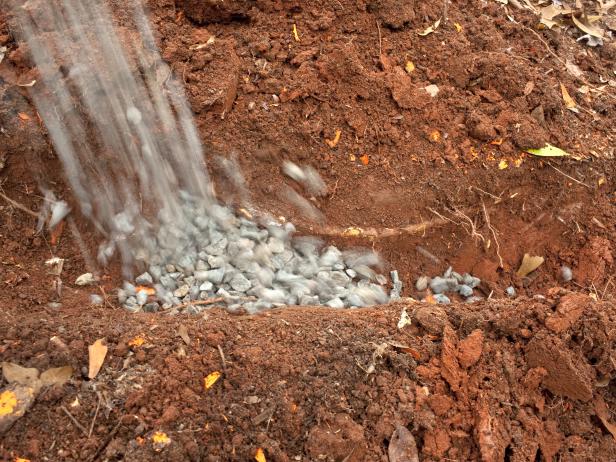
Add Fabric Lining
Use landscape fabric to line entire span of trench atop layer of gravel, leaving roughly 10" of excess fabric on each side of trench.
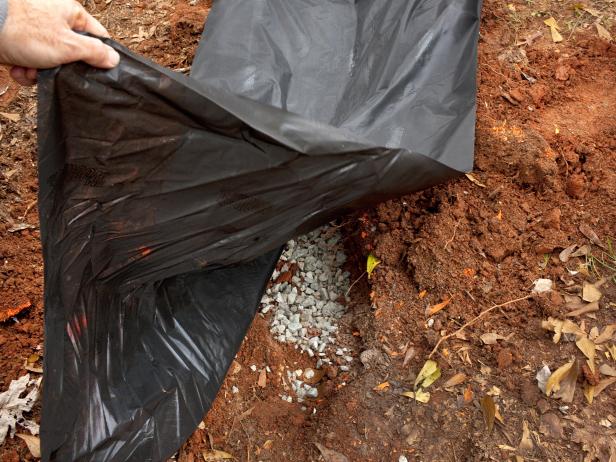
Insert Drain Pipe
Place drain pipe atop fabric lining, then add gravel, covering pipe completely. Leave approximately 5" between top of gravel and ground surface.
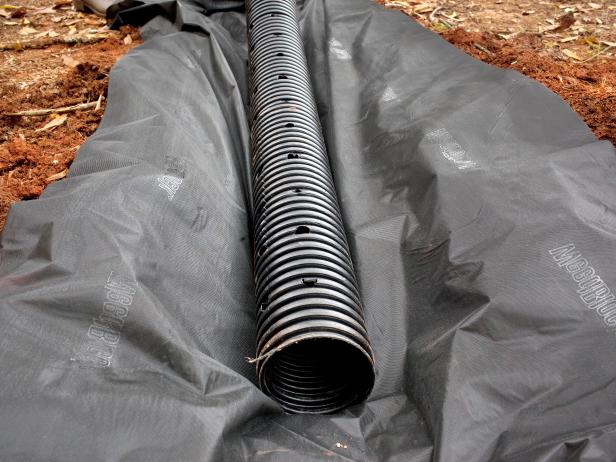
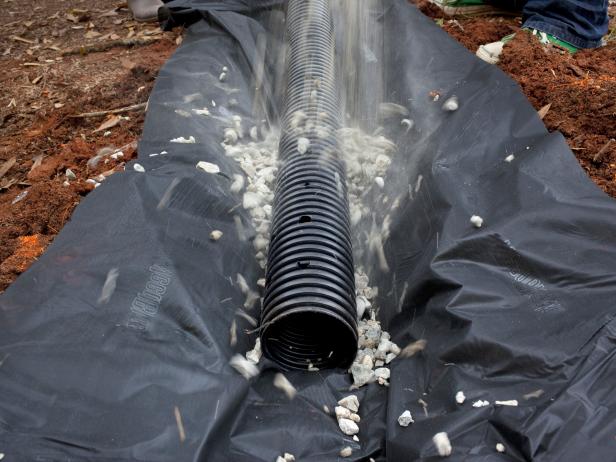
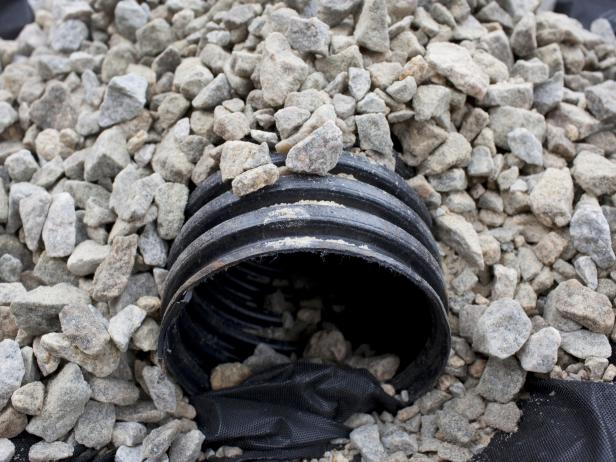
Fold Over Excess Fabric Lining
Fold excess fabric over gravel, creating an overlap. This will help protect the lined drain pipe.
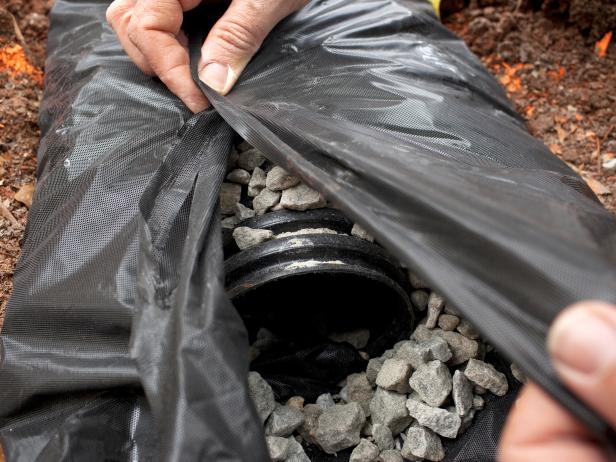
Fill and Cover Trench
Use shovel to fill trench with sand then topsoil. Cover sand and topsoil with turf and add a bed of stones around open end of drain pipe.


Tips for Installing a French Drain
- Dig a trench along the outside of your footing. The trench should be at least 2 feet wide, and can be as deep as 6 feet for a basement or as shallow as two feet for a slab-on-grade home.
- Lay the pipe on the virgin soil. It is very important that the pipe always be sloped from a higher starting point to an ending point of lower elevation, so gravity can force the water out. The grade should always slope away from the home to ensure that the water is directed away from the walls of the home.
- Cover the pipe with at least 12 inches of washed gravel.
- Lay filter fabric over the gravel to prevent any soil from clogging the pipe.
- Back-fill the foundation with top soil back to its original grade height.







